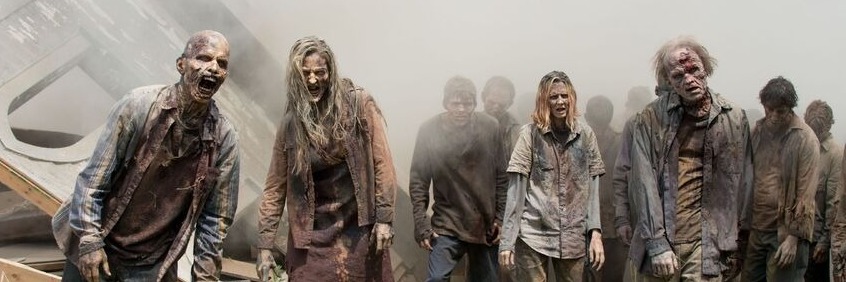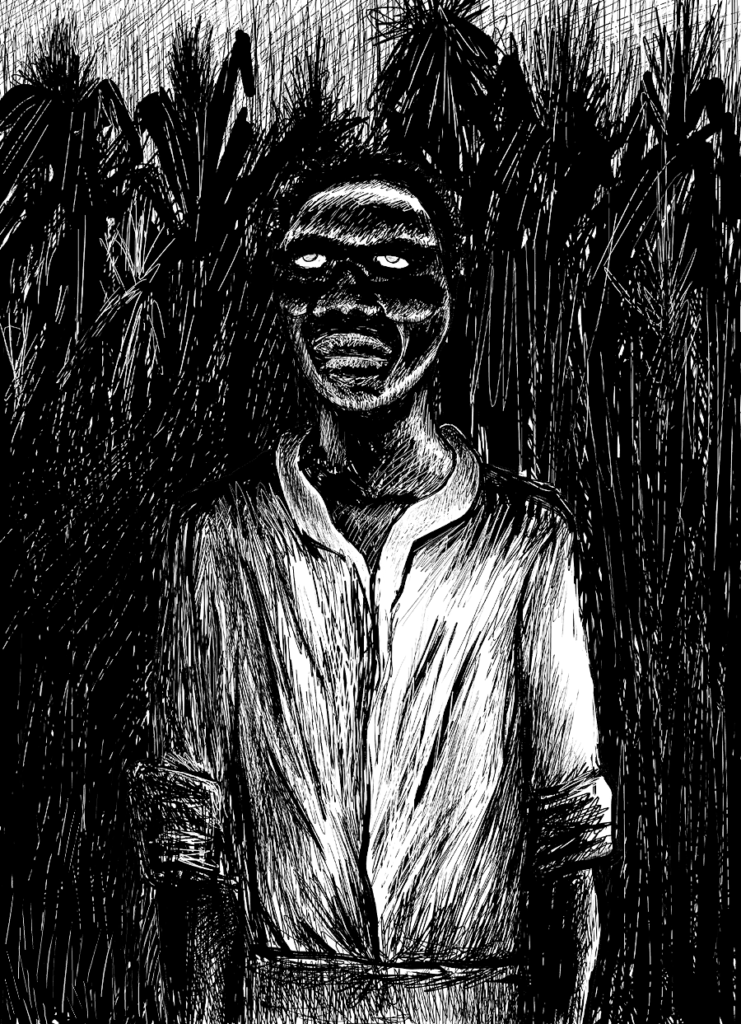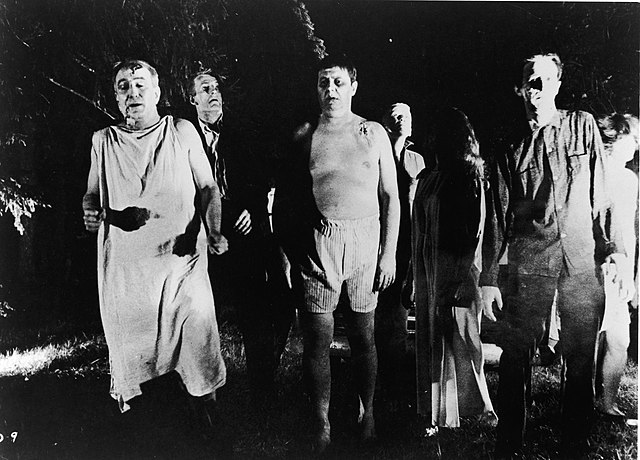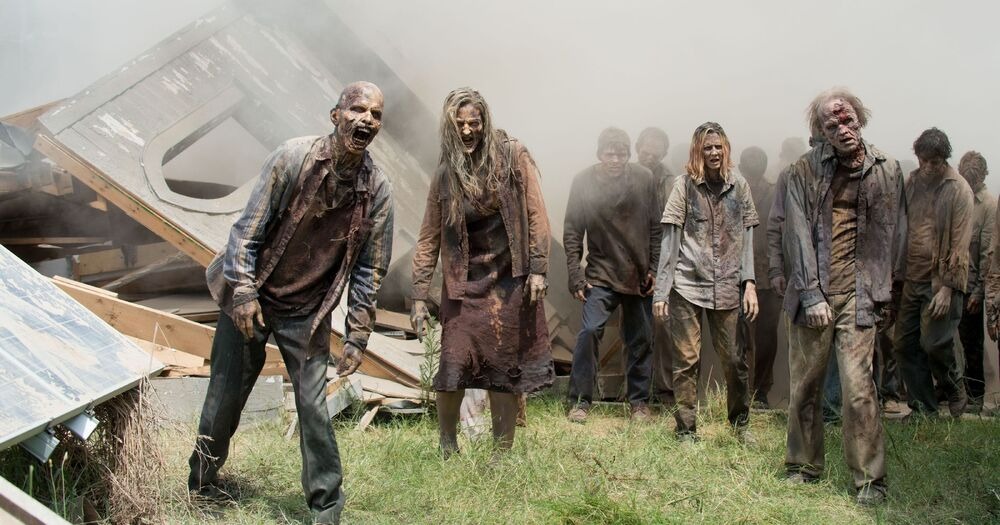Zombies are one of the most popular and common creatures in the modern horror genre, being featured in countless movies, series, and novels. While now the characteristics of zombies are pretty well defined and uniform across different works of fiction, their features have changed and evolved since their first appearance in popular culture in the early 20th century. Also, although modern zombies come from Haitian folklore, similar concepts can be found in much older tales.
Ancient zombie-like creatures
The concept of a corpse that has been brought back to life goes back several millennia, sometimes even with characteristics similar to modern zombies. The earliest appearence of this concept is in ancient Mesopotamian myths, where the goddess Ishtar threatens to raise what we would now call a “zombie army” saying:
I shall bring up the dead to consume the living,
I shall make the dead outnumber the living.
However, it has been pointed out by some authors that Mesopotamian mythology features ghosts and spirits, so the passage probably refers to non-physical beings rather than the modern corporeal zombies.
While stories of uncorporeal beings are more common throughout history, revenants, or physical corpses that have been revived, appear in many myths from different cultures all over the world since ancient times. One of the most notable zombie-like creatures is the draugr (plural draugar), an undead being from Scandinavian folktales. Draugar are reanimated corpses and, like modern zombies, are depicted with corporeal bodies. They are described as having an awful stench, a necrotic black or blue color, and having superhuman strength and evil intentions. Draugar attack whoever tries to rob their grave, but are also bloodthirsty and envious of the living, and thus can assault anyone who crosses their path. They are also difficult to kill, and warriors in folktales had to cut off the head of the draugr, burn their body, and dump the ashes in the sea to make sure the creature was gone. People who were mean and greedy in life can become draugr and, to avoid this, several precautions were taken when the corpse was buried to prevent it from returning from the dead. In more modern depictions, the concept of draugr is more limited to the corpses of fishermen who have drifted at sea.
Other stories of revived corpses haunting the living can be found in Europe, mostly in Slavic folktales, and in Japanese, Chinese, Malay, Turkic, and Hindu mythology. However, most of these beings are more akin to vampires than zombies. One example are the Chinese jiāngshī (or goeng si in Cantonese, literally meaning “stiffened corpse”), who are described as corpses that have returned to life and absorb the qi (life force) of living creatures at night, while resting during the day. A more zombie-like creature is the Tibetan ro-langs (which literally means “risen corpse”), which is a corpse that has been revived by a sorcerer and can infect living humans just by touching their head.
In more modern times, the 1818 novel Frankenstein by English author Mary Shelley includes various elements of the current zombie stories, such as the resurrection being the result of a scientific process rather than a magical ability, but it is still far from the concept of zombie we know today. Nevertheless, various novels from the 19th and early 20th century helped define zombies in modern popular culture, such as the 1922 horror story Herbert West–Reanimator by American author H. P. Lovecraft, in which a mad scientist attempts to revive corpses, with the resurrected humans ending up being extremely violent. Among these depictions of reanimated corpses are the stories of revived Egyptian mummies, that emerged in the 19th century during the French and then British occupation of Egypt and sparked their own horror genre, which has some elements in common with zombie stories.
The origin of modern zombies
The modern concept of zombie comes from Haitian folklore. Corpses revived by witchcraft are commonly featured in stories linked with the Haitian voodoo religion, and are rooted in African and Caribbean traditions. These tales were also influenced by slavery, as being turned into a slave after death as a zombie was thought to be a punishment for offending voodoo deities.
The word “zombie” in the English language first appears in 1819 (as “zombi”) in a book about the history of Brazil written by Robert Southey, referring to a 17th-century leader of a slave rebellion named Zumbi. This name might come from the words nzambi (god) and zumbi (fetish) in the Kongo language of Central Africa, while in the Kimbundu language spoken in Angola the word nzumbi refers to a soul or a spirit that torments the living. In the Caribbean region, a jumbee was instead a name given to any kind of malevolent entity, while in Haiti the word became zonbi or zombi, and was used to describe a reanimated corpse.
Depiction of a zombie among sugar canes in Haiti.
Zombies became known in Western culture in the early 20th century, during the United States occupation of Haiti (1915-1934). In the 1929 book The Magic Island, American explorer William Seabrook recounts his travel to Haiti and his experiences with the voodoo religion, and provides the first Western description of a zombie as “a dead body which is made to walk and act and move as if it were alive”.
This description became popular in the United States and inspired a stage play called Zombie, that premiered in February 1932, and the horror film White Zombie, released in July of the same year. This movie, considered the first zombie movie ever made, tells the story of a young girl turned into a zombie by a voodoo master in Haiti. Despite negative reviews, the movie was a box office success and led to a sequel in 1936 called Revolt of the Zombies, and various films with similar themes such as I Walked with a Zombie, released in 1943.
Zombies in modern popular culture
The 1954 novel I Am Legend by American writer Richard Matheson and its 1964 film adaptation The Last Man on Earth popularized the concept of a disease that turns people into creatures described here as vampires, but which later became a common element of the zombie genre. These works inspired the 1968 horror film Night of the Living Dead, directed by George Romero. This movie, which depicts a group of people being assaulted by reanimated corpses, was a huge box office success, and is considered one of the most influential horror movies of all time. Despite never mentioning the word “zombie”, the movie came to define the modern concept of zombie, removing the Haitian voodoo element and characterizing the creatures as violent flesh-eating beings.
Zombies in the 1968 movie Night of the Living Dead.
After Night of the Living Dead, zombie movies became popular in the 1970s and 1980s. Some of the most notable examples from this time are Dawn of the Dead (1978), also directed by George Romero and depicting a large-scale zombie apocalypse, and The Return of the Living Dead (1985), which introduced the idea of zombies eating specifically brains. Also, in 1983 the music video for the song Thriller by Michael Jackson shows the singer dancing with a horde of zombies, and became a major pop culture phenomenon, often described as one of the best music videos of all time.
With the popularity of these depictions, the idea of zombie became more and more separated from Haitian folklore and magic. Their existence began being explained with scientific elements, especially after the 1996 Japanese video game Resident Evil, which sparked a popular media franchise and defined the survivor horror genre. The success of Resident Evil and The House of the Dead, another Japanese video game franchise that debuted in 1996, led to a renewed interest in zombies after a decrease in the late 1980s and early 1990s, first in the Far East and then all over the world. Viruses, biological weapons, and parasites became common explanations for the origins of zombies, and these games also popularized the “running zombie”, as opposed to the slow-walking ones of earlier depictions.
After a wave of Asian movies, there was a resurgence of Western zombie films in the 2000s, starting with 28 Days Later (2002), the 2004 remake of Dawn of the Dead, and the comedy movie Shaun of the Dead (2004), as well as various Resident Evil movies. The TV series The Walking Dead, which debuted in 2010 and depicts a group of people trying to survive a zombie apocalypse, became one of the most popular horror series of all time. Meanwhile, in 2013 the zombie apocalypse movie World War Z, loosely based on a 2006 bestseller book, became the highest-grossing zombie film of all time, grossing over $540 million.
A horde of zombies in the TV series The Walking Dead.
Another massive success was the 2013 video game The Last of Us, which has been praised for its plausible depiction of a strain of the parasitic Cordyceps fungus infecting living beings and turning them into zombie-like creatures. Several Japanese anime and manga also explored the zombie genre in the 2000s and 2010s, such as I Am a Hero and Highschool of the Dead. Meanwhile in South Korea, the 2016 zombie apocalypse movie Train to Busan became a huge hit, and popularized the genre in the country. Some South Korean TV series featuring zombies became popular all over the world, such as Kingdom, set in 16th-century Korea, Sweet Home, and All of Us Are Dead.
Since the 2000s, zombies have sometimes been presented as having human-like behavior and feelings, becoming friends and even lovers of humans. Among these romantic depictions are the 2005 animated movie Corpse Bride, and the Japanese manga Sankarea (2009-2014), which was adapted into an anime in 2012. Over the past few years there has been a decline in the zombie genre in Western media, with some isolated successes such as the 2023 TV series adaptation of The Last of Us.




